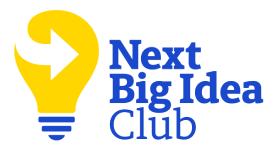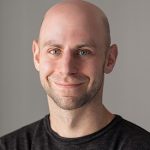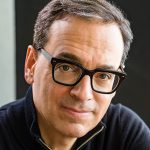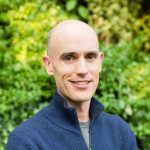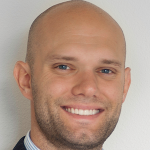Below, Jane Marie Chen shares five key insights from her new book, Like a Wave We Break: A Memoir of Falling Apart and Finding Myself.
Jane is a leadership coach, public speaker, and co-founder of Embrace Global, a social enterprise that developed a low-cost infant incubator. She has been a TED Fellow, an Echoing Green Fellow, and a Young Global Leader of the World Economic Forum. Her many honors include being recognized as a Forbes Impact 30 and receiving The Economist’s Innovation Award.
What’s the big idea?
Like a Wave We Break is a story of self-discovery. When achievements define us or serve as an escape from hidden scars of trauma, we do ourselves and others a disservice. Pushing onward from a fractured foundation can break a person and limit their leadership potential. Self-compassion and self-worth are found not by running ahead, but by looking within. Such a journey is the incubator of life’s biggest breakthroughs.
1. Our wounds can drive us until they break us.
I grew up in a home with physical violence. As a little girl, I often felt powerless. That sense of powerlessness became the engine that unknowingly drove much of my life. When I was a graduate school student at Stanford, my team invented a portable infant incubator for premature babies. Unlike traditional incubators, our technology could work without constant electricity. It was designed to be used in remote parts of the world.
We turned the idea into a company called Embrace and set a goal to save a million babies. After graduation, I moved to India, where nearly 40 percent of the world’s premature babies are born. Over the next few years, we did product development, clinical testing, figured out manufacturing, and then we finally launched the product.
It was so rewarding to save lives with our incubators. One of the first babies we saved was in China. We donated a few incubators to an orphanage in Beijing and they rescued a two-pound baby that had been found abandoned on a street. They kept him in our incubator for weeks, and he survived. Seven months later, I visited this orphanage and held this baby in my arms. Stories like his kept me going. Over the next few years, I gave my life to this mission.
“Seven months later, I visited this orphanage and held this baby in my arms.”
Our work was recognized by President Obama, funded by Beyoncé, and covered by global media. On the outside, it looked like a success story, but what fueled me also eventually broke me. The powerlessness I felt during my childhood had given me purpose, but it also drove me to complete burnout. After a decade of insurmountable setbacks and obstacles, Embrace nearly collapsed—and I did too. Through it all, I learned that achievement, even when rooted in purpose, can be a survival strategy or way to outrun our pain. Our wounds can give us extraordinary drive, but if we never face them, those same wounds can consume us.
This is a trap I see many leaders fall into. On the surface, it looks like grit or vision, but beneath, there may be an unconscious attempt to fill an inner void. Leadership can carry shadows—burnout, perfectionism, control, hunger for validation—but when we do the inner work, we stop leading from fear. We begin to lead from wholeness, and that shift makes leadership far more sustainable.
2. Healing starts with feeling.
When Embrace nearly collapsed, I didn’t just lose my company; I lost my entire identity. Everything I had poured my soul into for a decade was gone. I felt utterly broken, and because I don’t know how to do anything halfway, I bought a one-way ticket to Indonesia and launched a healing quest. I tried every healing modality I could find. I did a 10-day silent meditation retreat in the jungle, where I sat cross-legged for 14 hours a day, and no reading, writing, exercise, or even eye contact was allowed. I surfed epic waves, chasing adrenaline in the ocean just as I had once chased it in my work. I tried psychedelic therapy. I even did a frog poison ceremony, burning holes in my leg and vomiting so that there was nothing left inside me.
With each experience, I hoped that maybe this would be the magic elixir that would fix me, but my real breakthroughs didn’t come in the jungle, ocean, or during a ceremony. They came when I stopped running and finally turned toward the grief I was avoiding. This was way harder than it sounds, especially given that I trained myself not to feel anything to survive my childhood. As Bessel van der Kolk writes, “The body keeps the score.” Trauma isn’t just in our memories. It lives in our bodies. Healing required me not to do more, but to feel more—to turn toward the pain I’d spent a lifetime outrunning and to meet it with compassion.
“Our feelings are data. They carry so much wisdom.”
We live in an escapist society that offers endless ways to numb, be that through work, achievement, substances, or self-help rituals. You might be listening to this podcast as an escape, but true healing isn’t about chasing the next fix. It’s about learning to sit with ourselves, and this isn’t just personal; it applies to leadership. Our feelings are data. They carry so much wisdom. When we can slow down enough to notice and honor them, we make wiser choices personally and for the people we lead. Leaders who can feel are leaders who can truly connect.
3. Resilience comes from self-compassion.
For most of my life, I thought resilience meant powering through. If I was tired, I kept pushing. If I was afraid, I doubled down. I believed grit was strength, but that belief is what led me to burn out. On my healing journey, one of the most transformative frameworks I encountered was Internal Family Systems (IFS), which teaches that we are all made of a multitude of inner parts:
- Protector parts that drive us to achieve control or push harder so that we don’t have to feel pain.
- Exiles are the wounded parts that hold emotions like shame, fear, or loneliness.
- The Self, with a capital S, being the calm, compassionate core of who we are.
One of my protectors was the warrior within who was willing to fight every battle. Someone nicknamed this part of me, Janis Khan. Another protector was the overachiever, the part that kept me working to exhaustion. That part had won my life for decades. When I began turning toward my parts with compassion and curiosity, I began asking, What are you protecting me from, and what are you afraid of?
Beneath these protectors, I met the scared little girl who felt like she was never enough. For years, I had abandoned her. Slowly, I turned toward her. I told her, You are enough exactly as you are. For the first time, I met her with love. This practice changed everything.
Real resilience is about cultivating self-compassion so we can meet life with authenticity and courage. When we are kind to ourselves, we are more willing to take risks, stumble, and even fail because we know we will still be okay. As leaders, this matters deeply. If we want to create psychological safety for others, we first need to create it within ourselves. Only then can we build teams and organizations where people thrive.
4. Our biggest breaking points can become our biggest breakthroughs.
When Embrace shut down after 10 years, I reached the lowest point of my life. I was having panic attacks. I was depressed. There was a part of me that didn’t want to be doing the work anymore because I was so burned out. Another part of me saw the collapse as a failure—the death of everything I had worked so hard for. But the unraveling of Embrace ended up cracking me open. It forced me onto a healing journey. For the first time, I had to confront the history that lived inside me. I would have never chosen that path if the company hadn’t collapsed.
“For the first time, I had to confront the history that lived inside me.”
One of the teachers I had the opportunity to learn from was Tony Robbins, who often says, “Life happens for you, not to you.” I really believe these words. The adversity I faced growing up and the powerlessness I felt as a child became the foundation for my purpose, and the collapse of Embrace became the doorway into my healing. We often think of challenges as obstacles to overcome or detours from the life we planned, but sometimes they are the teachers we need. My most painful breaking point turned out to be the catalyst for my deepest breakthrough.
5. We are worth more than the sum of our achievements.
For years, I believed that if I just worked harder, achieved more, and saved more lives, then maybe I would finally feel like I was enough. But no award, recognition, or headline ever quieted that inner voice of self-doubt. When Embrace shut down, I had to ask, Who am I without my mission, my work, my title? I think it’s a question many of us are facing now because of AI that is capable of doing our jobs faster and better than us. We live in a culture that defines us by our output, but we are enough just as we are.
We each carry an innate worth beneath all that noise of titles and social media likes. We each carry an innate worthiness that cannot be taken away. Having an unshakeable inner sense of worthiness gives us the resilience to face whatever life brings. The collapse of Embrace freed me from the prison of equating my worth with my achievements, and as a result, opened me to a life that feels fuller, freer, and more authentic.
In a miraculous and serendipitous turn of events, Embrace was saved. It continues as a nonprofit, and this year we reached a million babies saved with our incubators. That goal we set nearly two decades ago. I am so proud of this milestone, but it no longer defines all of who I am. My worth is not in headlines or metrics. It’s in the simple truth that I am enough, just as I am. You too are enough, just as you are.
Enjoy our full library of Book Bites—read by the authors!—in the Next Big Idea App:
